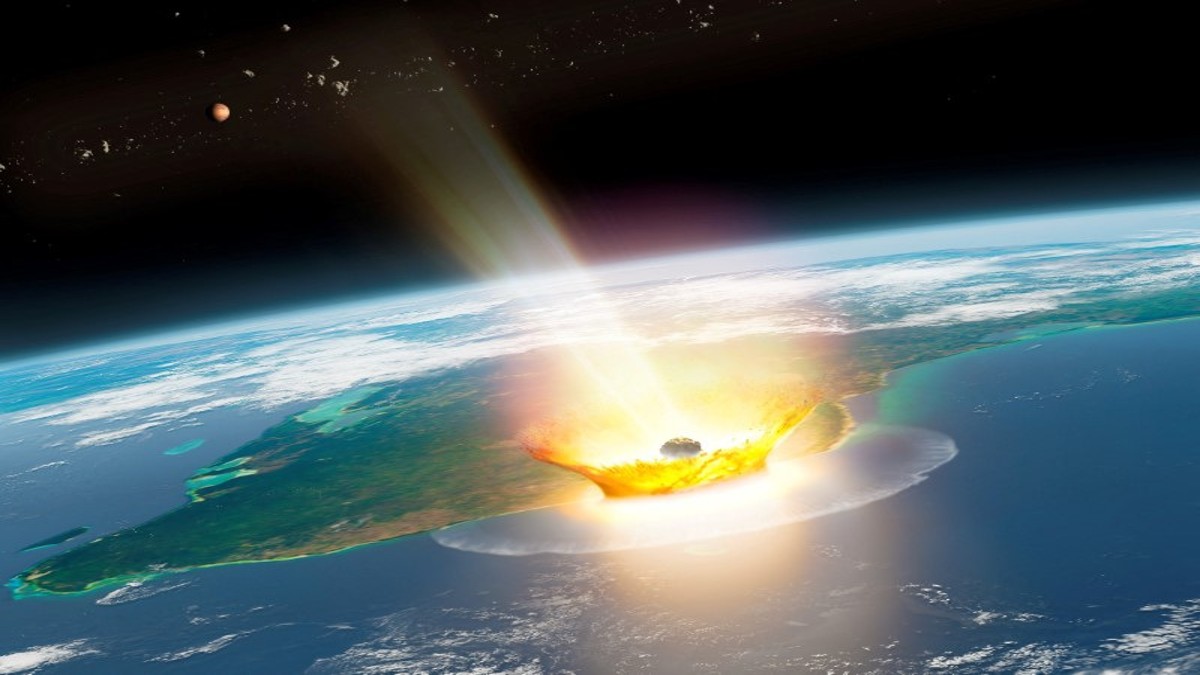It was a turning point in the history of life on Earth.
About 66 million years ago, a massive cosmic rock an estimated 10 to 15 kilometres wide slammed into the Earth, ending the age of dinosaurs and causing the most recent mass extinction.
The impact pulverised the asteroid and spread its debris worldwide, still present in a global layer of clay deposited in the aftermath of that fateful day.
The intense debate surrounding the origin of the rock has stirred scientists for decades, including a long-running dispute about whether it was a comet or an asteroid.
A new study published on Thursday in the Science Journal has answered some of these questions about the impactor’s origin.
Let’s take a closer look.
The study
Dinosaurs had long ruled the land but, aside from their bird lineage, were wiped out following the impact, as were the flying reptiles called pterosaurs, the large marine reptiles and other sea life, including many marine plankton species.
A team of researchers led by Mario Fischer-Godde, a geochemist at the University of Cologne in Germany, used an innovative technique to demonstrate that the apocalyptic culprit was formed beyond Jupiter’s orbit.
They analysed sediment samples formed during the period between the Cretaceous and Paleogene eras, the time of the asteroid’s cataclysmic impact.
Researchers also measured the isotopes of the element ruthenium, which is not uncommon on asteroids but extremely rare on Earth.
The impact at the end of the Cretaceous Period gouged the Chicxulub (pronounced CHIK-shu-loob) crater, which was 112 miles (180 kilometres) wide and 12 miles (20 kilometres) deep. The clay layer is rich in metals, including iridium, ruthenium, osmium, rhodium, platinum and palladium, which are rare on Earth but common on asteroids.
Impact Shorts
More ShortsBy inspecting the deposits in multiple geological layers that mark the debris from the impact at Chicxulub, in what is present-day Mexico’s Yucatan Peninsula, they could be sure that the ruthenium studied came “100 per cent from this asteroid.”
“Our lab in Cologne is one of the rare labs that can do these measurements," and it was the first time such study techniques were used on impact debris layers, lead author Mario Fischer-Godde told AFP.
Ruthenium isotopes can be used to distinguish between the two main groups of asteroids: C-type, or carbonaceous, asteroids that formed in the outer solar system, and S-type silicate asteroids from the inner solar system, nearer the sun.
The findings
According to the study, the asteroid that caused the mega-earthquake, the global cold, and the extinction of the dinosaurs and most other living forms was a C-type asteroid that originated outside of Jupiter.
Studies conducted two decades earlier had previously assumed this, albeit with much less certainty.
“A projectile originating at the outskirts of the solar system sealed the fate of the dinosaurs,” said Fischer-Gödde quoted by Reuters.
The findings are striking, because most meteorites — pieces of asteroids that fall to Earth — are S-types, Fischer-Godde pointed out.
“We cannot be really sure where the asteroid was kind of hiding just before it impacted on Earth,” Fischer-Godde said.
He continued by saying that it might have stopped over in the asteroid belt, which is home to the majority of meteorites and is situated between Mars and Jupiter, after it formed.
The findings are especially noteworthy because Earth-crashing asteroids of this kind don’t happen very often.
Such information may well prove useful in assessing future threats, or determining how water arrived on this planet, Fischer-Godde said.
Not a comet
The theory, presented in an extensive paper in 2021, that the damaging impactor was a comet — a mixture of ice rock from the solar system’s outermost point — is likewise rejected by the study.
The composition of the celestial object was significantly different from that of a subgroup of meteorites that are thought to have formerly been comets, according to sample analysis.
Fischer-Godde concluded that it is “unlikely” that the impactor in question was a comet.
Regarding the broader use of his findings, the geochemist proposed two recommendations.
He thinks the mystery of the origin of our planet’s water may be solved by more precisely defining the types of asteroids that have collided with Earth since its formation approximately 4.5 billion years ago.
Though they are less common, scientists think that asteroids, like the one that struck Earth 66 million years ago, may have carried water to Earth.
According to Fischer-Godde, studying asteroids from the past also helps humanity get ready for the future.
“If we find that earlier mass extinction events could also be related to C-type asteroid impacts, then… if there’s ever going to be a C-type asteroid on an Earth-crossing orbit, we have to be very careful,” he said, “because it might be the last one we witness.”
With inputs from agencies


)

)
)
)
)
)
)
)
)



